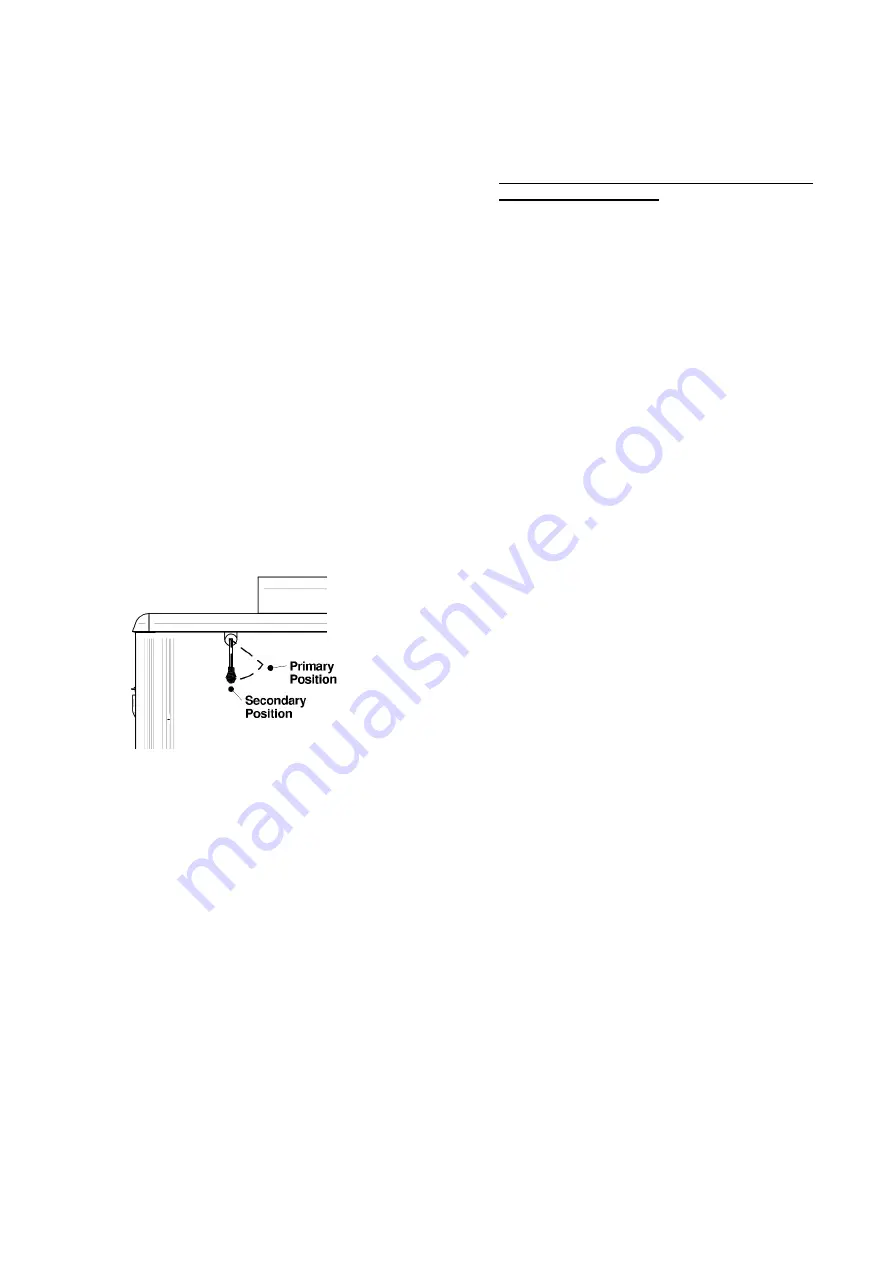
November 5, 2015
21
Operating Instructions
Operate always with the door closed: keeping the door
open can cause runaway and overheat, and it might
damage permanently the stove or a chimney fire.
It’s recommended to install a co, co2 and smoke
detector in the room where the stove is situated.
Never hit the door.
Never burn inflammable liquid: inflammable liquid makes
uncontrolled heat and can make permanent damage to
the stove or a chimney fire.
Always verify if the air inlet is not obstructed before
lightning.
Never elevate fire with grate or andiron. Always make fire
directly on the hearth.
Primary and secondary air admission
control
When the handle on the left of the stove is vertical, the air
admission is only from the tube, this is what we call “Secondary
air admission”. When the handle is angled, the air admission is
direct and from the air intake above the door which is called
“Primary air Admission”.
Warning: Operating the stove with the Primary air
admission fully open for a long period of time can damage
the stove.
IT IS PROHIBITED TO MODIFY AIR ADMISSION TO
OBTAIN A HIGH HEAT OR ANY OTHER REASONS. ANY
MODIFICATION CAN AVOID GUARANTEE.
Lightning fire
After installing correctly the stove following the installation
instruction of the manufacturer, you are ready to light it.
1) Turn the admission handle in horizontal position to set
the primary air admission.
2) Put paper and lightning wood in the combustion
chamber and light the fire in your way.
3) Close partially the door keeping a slight opening.
When chimney have enough heat buildup, close the
door completely and lock it. Wait for a good fire
buildup.
4) Once you have an ember fire, it’s time to add logs.
Follow now the instruction section on how to keep a
fire.
DO NOT OVER CHARGE THE STOVE MORE THAN
THE UPPER BRICK ROW.
You can control the combustion by turning up or down the
handle. The wood will burn more rapidly when more primary air
is set. Otherwise the wood burn more slowly and more
efficiently with the handle set to secondary air.
•
NEVER LEAVE THE STOVE UNATTENDED WHEN
THE DOOR IS SLIGHTLY OPEN. ALWAYS CLOSE
THE DOOR AFTER LIGHTNING.
•
ALWAYS USE THE STOVE WITH THE DOOR
CLOSED.
•
DO NOT USE ANY CHEMICAL PRODUCT OR
INFLAMMABLE LIQUID TO LIGHT OR REKINDLE
THE FIRE.
•
DO NOT BURN WASTE OR ANY OTHER
INFLAMMABLE PRODUCTS AS GASOLINE,
NAPHTHA OR MOTOR OIL.
•
DO NOT MAKE FIRE TOO CLOSE TO THE GLASS.
•
KEEP INFLAMMABLE PRODUCTS FAR FROM THE
APPLIANCE.
First fire
The first hours of operation, you must heat it gradually. In order
to allow an appropriate baking of the paint and in order to
facilitate its adhesion with metal, do not heat the appliance with
a strong fire. It will also avoid thermal shock which could lift up
the paint or make the color fade.
Make sure that the room is ventilated enough in order to
eliminate the odours and the smoke coming from the paint
during the first hours of usage.
Even if this nuisance is temporary, open the windows and the
doors in order to ensure a good ventilation. This special paint is
conceived to tolerate temperatures until 1200°F (650°C).
Keep a fire
To add firewood into the stove and keep a fire:
13) Turn the handle to horizontal position and wait a few
second to let the fire adjusting to the new conditions.
14) Open the door handle to the first position and wait a few
second to balance pressure to avoid fume to escape from
stove.
15) Turn the handle completely and leave the door half open
and leave the time so that the fire can adjust.
16) Open the door widely.
17) Move embers with poker near the door to oxygen it and
make it burned completely.
18) Add firewood over the ember, keeping it away from the
glass door to prevent the flame from touching the ceramic
glass.









































